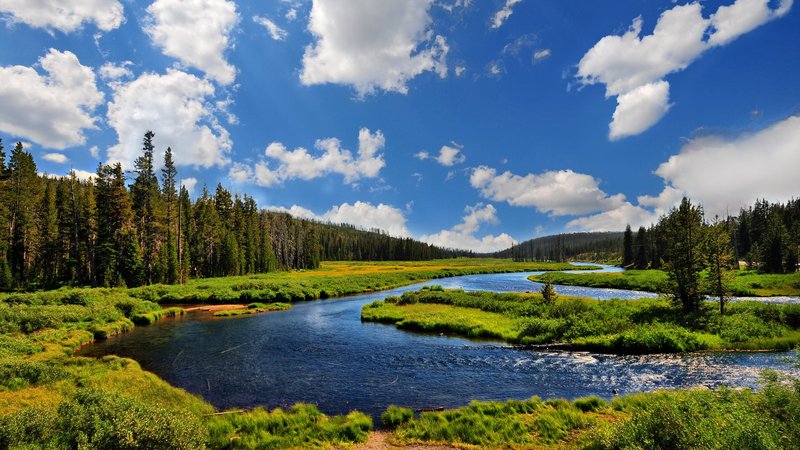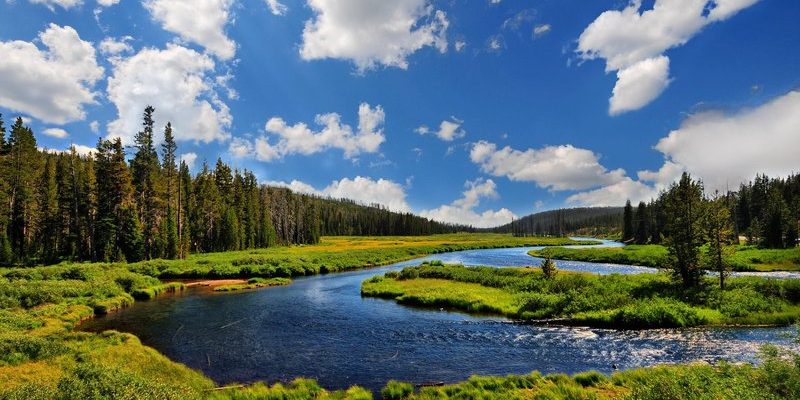
River otters are social, energetic, and intelligent animals that thrive in various habitats, from rivers and lakes to coastal areas. But their impact goes beyond their charming antics. By understanding how these creatures fit into their ecosystems, we can appreciate the interconnectedness of nature and the importance of preserving their habitats. Let’s dive deeper into the river otter’s role and why it matters so much to our environment.
What Are River Otters?
River otters belong to the weasel family and are known for their agile bodies and playful behavior. These mammals usually weigh between 50 and 100 pounds and can grow up to 4 feet long, including their tail. Their thick, waterproof fur keeps them warm in chilly waters, enabling them to thrive in a variety of climates.
These creatures are equipped with webbed feet, allowing them to swim gracefully. They are mostly nocturnal and tend to be social, often seen in groups called rafts. Watching them slide down mud or snowbanks into the water can bring a smile to anyone’s face! But their cuteness shouldn’t overshadow their ecological importance.
Predator and Prey Balance
River otters are essential predators in their ecosystems, primarily feeding on fish, crustaceans, and small mammals. By controlling the populations of these species, otters help maintain a balanced ecosystem. Here’s the thing: if otters weren’t around to keep fish populations in check, certain species could overpopulate, leading to overgrazing and depletion of aquatic plants.
This balance is vital for the health of freshwater ecosystems. For instance, if a specific fish species becomes overabundant, it can lead to a decline in water quality due to overconsumption of algae. Otters help prevent this by feasting on these fish and allowing other species to thrive. It’s like a natural form of pest control!
Impact on Aquatic Plant Life
You might be wondering how otters affect plant life in their habitats. Well, it all comes back to their diet. By preying on fish and other aquatic organisms, river otters contribute to the health of aquatic plants. These plants play a critical role in providing oxygen, stabilizing sediments, and offering shelter for various aquatic species.
For instance, when otters consume certain fish, they promote healthy algae growth, which can benefit both plant and animal life in the ecosystem. Without otters, the balance between plant and animal life could be disrupted, leading to a cascade of negative effects throughout the food web. It’s amazing how one playful creature can influence an entire ecosystem, right?
Indicator Species
River otters are considered indicator species, meaning their presence or absence can tell us a lot about the health of their environment. If river otters are thriving, it’s a good sign that their habitat is healthy and balanced. On the flip side, a decline in otter populations often points to environmental issues like pollution or habitat destruction.
For example, otters are sensitive to water quality. If pollutants contaminate their habitat, it can lead to fewer otters. This, in turn, might signal problems for other species as well, creating a ripple effect. So, by monitoring river otter populations, conservationists can gauge the overall health of aquatic ecosystems and take action when necessary.
How Otters Contribute to Biodiversity
Biodiversity is crucial for ecosystem resilience, and river otters play a part in enhancing this diversity. Their activities create nesting sites for various birds and redistribute nutrients in the water through their waste. It’s like they’re little gardeners of the waterways!
When otters hunt, they often stir up the sediment, releasing nutrients that benefit other aquatic life. This process supports a variety of species, from tiny invertebrates to larger fish. So, the presence of otters not only aids in species diversity but also fosters a vibrant ecosystem where numerous organisms can coexist.
Conservation and the Future of River Otters
Sadly, river otters face threats from habitat loss, pollution, and climate change. As more wetlands and waterways become developed, otters lose their homes. This is where conservation efforts come into play. By protecting river habitats, we can support otter populations and, in turn, ensure the health of our aquatic ecosystems.
Local communities can also contribute by keeping waterways clean and restoring natural habitats. Simple actions, like reducing plastic use and managing stormwater runoff, help improve water quality and make life easier for river otters. Honestly, every little effort counts when it comes to protecting these fantastic animals and the ecosystems they’ve come to call home.
River otters are more than just charismatic creatures; they play a crucial role in maintaining the balance of their ecosystems. By serving as predators, contributing to biodiversity, and indicating environmental health, they remind us of the interconnectedness of life. As we work to protect their habitats, we enhance not just their future but the future of all the species that rely on healthy waterways.
Whether you’re an outdoor enthusiast or just someone who enjoys learning about nature, understanding the river otter’s role can help foster a deeper appreciation for the environment. So, next time you spot one, remember the vital part it plays in keeping our ecosystems thriving!

